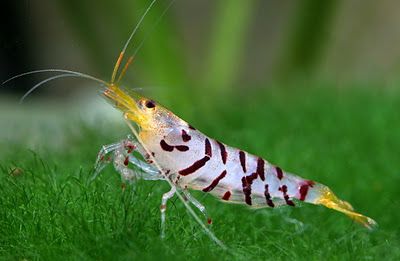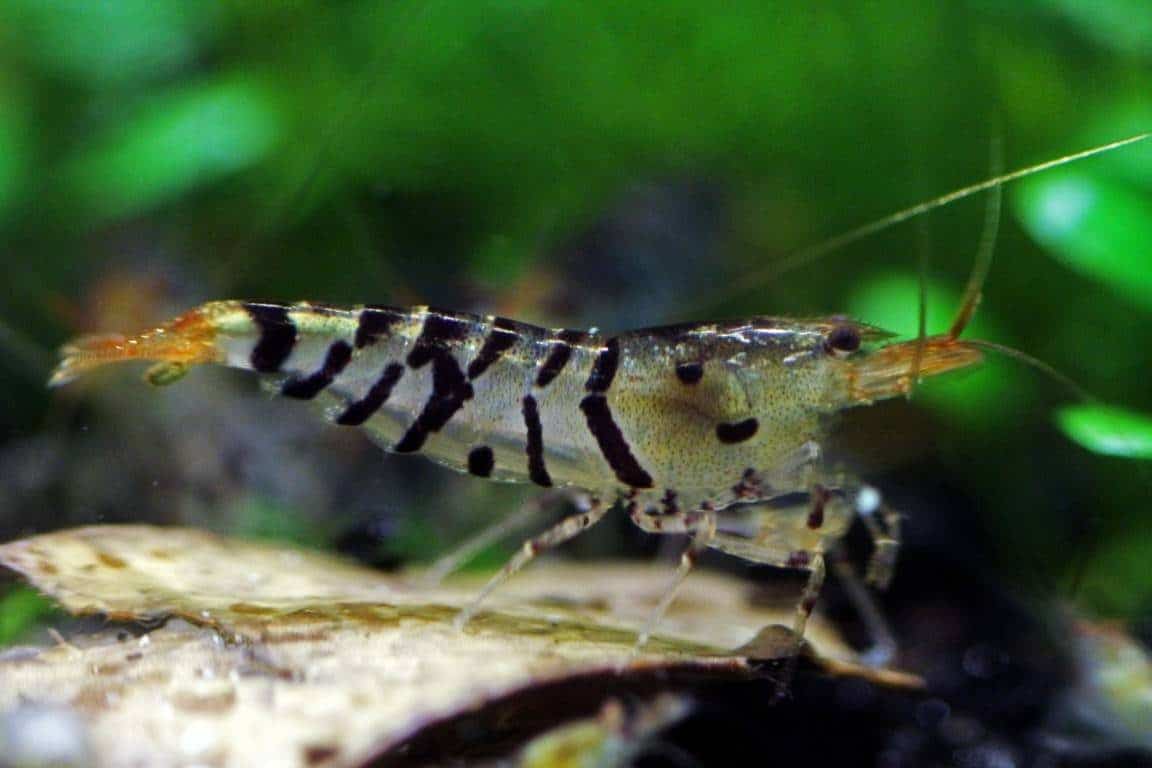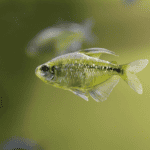Shimmering with ethereal beauty, the Super Tiger Shrimp is a beloved species among aquatic hobbyists. Originating from the wilds of China, and potentially other parts of Asia, this captivating crustacean has garnered considerable attention for its ease of breeding and unique characteristics.
Understanding the Super Tiger Shrimp
The Super Tiger Shrimp, when first introduced to the hobby, was a rarity, a precious gem in the aquatic world. This rarity was reflected in its hefty price tag. However, as breeders mastered the art of breeding this species, the price fell significantly.
The Super Tiger Shrimp shares its water conditions with its kin in the Tiger Shrimp species. It thrives in a pH of around 6.5-7.5 and prefers soft water. Cleanliness is paramount for these creatures, just as it is for other shrimp species. A well-maintained temperature of around 74-78°F provides a comfortable environment for the shrimp. In such conditions, and with clean water, the Super Tiger Shrimp will breed readily.
Feeding the Super Tiger Shrimp
Super Tiger Shrimp are not picky eaters. Think of them as miniature aquatic vacuum cleaners, happily munching on algae wafers, blanched spinach, zucchini, and any other food designed for them. The key to feeding is moderation. Shrimp should be fed once a day, with just enough food that they can consume in 2-3 hours. Overfeeding can lead to detrimental water quality issues and even shrimp death.
Occasionally, it’s beneficial to let the shrimp fast for a day or two. This allows them to cleanse their system, mimicking their scavenger lifestyle in the wild, and keeps the water free from excess food debris.
Breeding Super Tiger Shrimp
If the Super Tiger Shrimp had a motto, it would be “breed early, breed often.” These aquatic creatures are prolific breeders, provided they are kept in a clean, healthy environment. A female Tiger Shrimp can carry around 20-25 hatchlings, and once her eggs have hatched, it takes just a week for her to carry eggs again.
The breeding ease of the Super Tiger Shrimp rivals that of the popular Red Cherry Shrimp, making this species an attractive choice for breeders and hobbyists alike.
Identifying Male and Female Super Tiger Shrimp
On the surface, male and female Super Tiger Shrimp look strikingly similar. However, keen eyes will spot the round “undercarriage” unique to females. Additionally, female Super Tiger Shrimp boast a slightly larger body width compared to males. Interestingly, their body coloration remains uniform across both genders.
Purchasing Super Tiger Shrimp
While Super Tiger Shrimp may not be readily available in your local pet store, they have a strong presence online. Due to their popularity, they command a higher price than Regular Tiger Shrimp but sit just behind the Red Cherry Shrimp in terms of demand. If local vendors are scarce, a host of online vendors and breeders offer Super Tiger Shrimp.
Setting Up the Ideal Super Tiger Shrimp Habitat
Crafting the perfect home for your Super Tiger Shrimp begins with understanding their natural habitat. A gentle current, plenty of hiding spots, and a substrate conducive to algae growth make for an ideal setup. Aquatic plants, such as Java moss, create both an aesthetic backdrop and a practical hideout.
Maintaining clean water is crucial. Regular water changes, adequate filtration, and monitoring for ammonia, nitrites, and nitrates will ensure your Super Tiger Shrimp thrive. Remember, consistency in temperature, pH, and water hardness is key to maintaining their health.

Super Tiger Shrimp Health and Lifespan
The Super Tiger Shrimp is generally a robust species with a lifespan of about 1 to 2 years. But like all living creatures, they are prone to certain health issues. Most common are bacterial infections and parasitic infestations, which can be avoided with clean water and a healthy diet.
When properly cared for, these shrimp are resilient and less likely to fall ill. It’s crucial to monitor your shrimp for any unusual behavior or appearance changes, as these can be early signs of health issues.
Super Tiger Shrimp Behavior and Compatibility
Super Tiger Shrimp are peaceful creatures that coexist well with other non-aggressive species. They spend their days grazing on algae, hiding in aquatic plants, and scavenging for food.
Avoid pairing them with larger, aggressive fish species that may see them as food. Instead, opt for smaller, peaceful tank mates like snails, small fish, and other shrimp species. Remember, a harmonious tank leads to happier, healthier shrimp.
The Role of Super Tiger Shrimp in the Ecosystem
Super Tiger Shrimp are not just beautiful to look at; they also play an essential role in their ecosystem. As bottom feeders, they help maintain water quality by consuming excess algae and organic waste. This natural cleaning service contributes to a balanced, healthy aquatic environment.
Super Tiger Shrimp and the Aquarium Hobby
The Super Tiger Shrimp’s striking appearance, hardy nature, and ease of breeding have made it a darling of the aquarium hobby. As hobbyists continue to explore the diverse world of freshwater shrimp, the Super Tiger Shrimp is likely to remain a popular choice. Its care requirements and compatibility with other species make it an excellent choice for both beginner and advanced hobbyists.
Conclusion
The Super Tiger Shrimp is a captivating addition to any aquatic hobbyist’s collection. Its unique characteristics, ease of breeding, and resilience make it a compelling choice. Although the initial cost may be higher than other species, the long-term reward of owning these beautiful creatures is well worth the investment.
Frequently Asked Questions About Super Tiger Shrimp
Q: What is the ideal pH for Super Tiger Shrimp?
A: Super Tiger Shrimp prefer a pH range of 6.5-7.5. It’s essential to maintain this pH level for their health and well-being.
Q: How often should I feed my Super Tiger Shrimp?
A: You should feed your Super Tiger Shrimp once a day. Make sure to provide only as much food as they can consume within 2-3 hours to avoid overfeeding.
Q: What is the average lifespan of a Super Tiger Shrimp?
A: With proper care and a healthy environment, Super Tiger Shrimp can live up to 1-2 years.
Q: Can Super Tiger Shrimp live with other fish?
A: Yes, Super Tiger Shrimp can cohabitate with other non-aggressive fish species. However, it’s best to avoid larger, predatory fish that may see them as food.
Q: How can I tell the difference between male and female Super Tiger Shrimp?
A: Females are slightly larger than males and have a round “undercarriage.” However, the coloration is the same for both sexes.
Q: Are Super Tiger Shrimp easy to breed?
A: Yes, Super Tiger Shrimp are known for their ease of breeding. As long as they are kept in a clean, healthy environment, they will reproduce prolifically.
Q: Where can I buy Super Tiger Shrimp?
A: While Super Tiger Shrimp may not be readily available in all local pet stores, many online vendors and breeders offer these shrimp. Do your research to find a reputable source.






